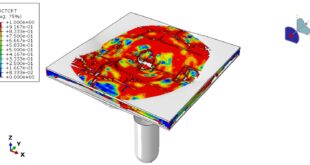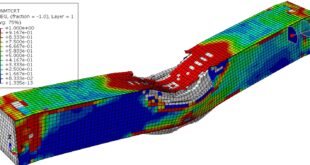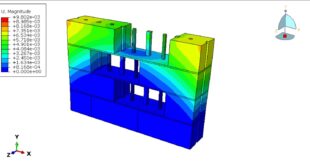In this tutorial, the Simulation drilling hole process in the Abaqus by using a rigid drill tool has been studied. Concrete drilling, or core drilling, is the process of drilling precise holes in concrete floors or walls, or in any other paved surfaces or structures. The concrete is modeled as a three-dimensional solid part. The drill tool is imported to the Abaqus because of the complex geometry. The tool is assumed as a rigid body part. You can see a figure of the assembled parts below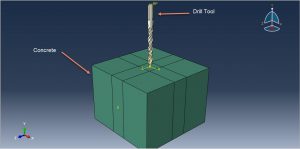
The steel material with elastic data is used for the drill tool and also it’s considered as a rigid body in the interaction module. The concrete needs a specific material type because of the damage and failure which happens during the drilling process. Abaqus gives many material models for the concrete which can be used in the Abaqus, input file, and subroutine code. In this tutorial, the Johnson-Holmquist model is used to demonstrate the failure and damage in the concrete part. The explicit procedure is selected with a mass scale to accelerate the simulation. The input file capability to create general contact that consider erosion of the internal element is implied. The fixed boundary condition is used for the concrete and axial and rotational velocity for the drill tool. The mesh should be fine to obtain good results
After the simulation, all results such as failure and damage, stress, strain, and … are achievable. You can see some figures for the results below 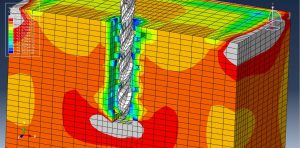
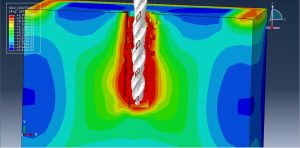
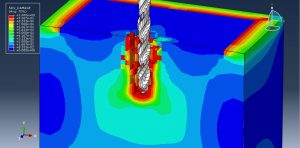
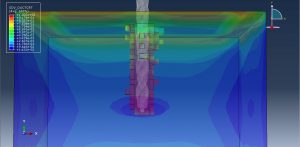
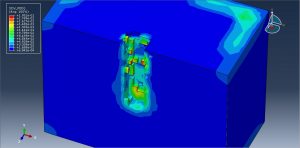
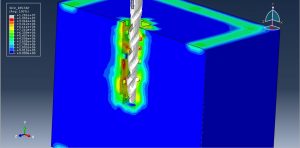
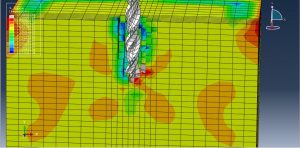
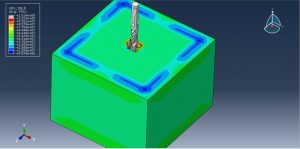
You can provide CAE ,INP,and English video files of this simulation here. The cost of these files is Twenty-Six Euros. you can click on the bellow bottom to beginning process
You can purchase the tutorial through a PayPal account, a Visa, or a Master card, just before payment,send me an email to this address: karampourp@gmail.com
 Abaqus tutorials Abaqus tutorials
Abaqus tutorials Abaqus tutorials
